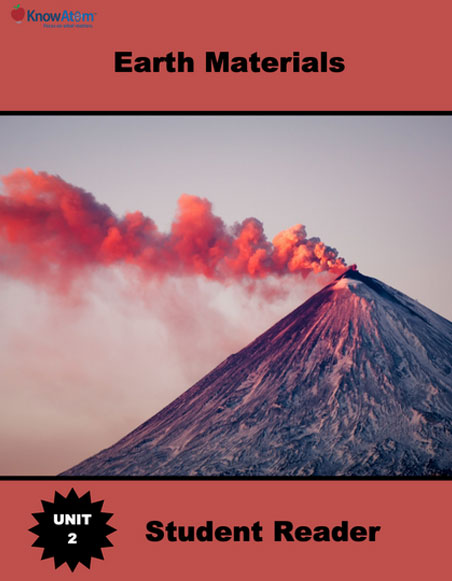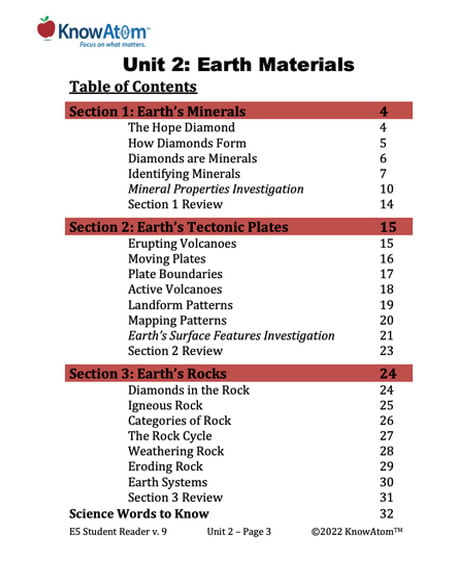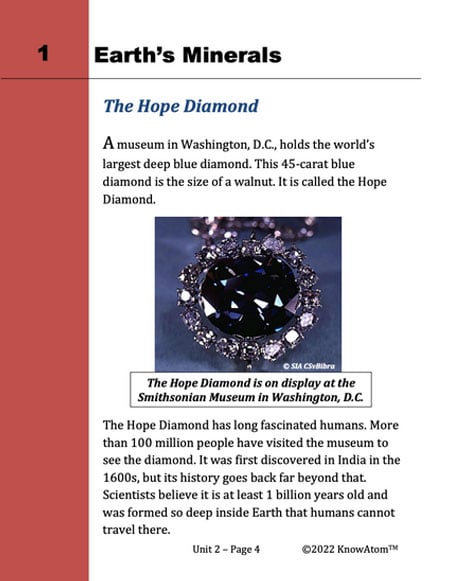Science background provides teachers with more in-depth information about the phenomena students explore in this unit. Here is an excerpt from the science background information on Earth’s surface features.
When two plates move away from each other perpendicular to a fault line, they form a divergent boundary. This movement creates ocean ridges and rift valleys, and may result in earthquakes and magma welling up onto Earth’s surface.
When two plates move toward one another perpendicular to the fault line, they form a convergent boundary. When two plates converge, sometimes one of the plates sinks under another plate. This is called subduction—the process that occurs when two plates crash into each other and the edge of the heavier plate slides beneath the lighter one.
The heavier crust melts back into the Earth's mantle, becoming magma. As it melts, some of it returns to the surface as volcanoes and lava flows, creating volcanic mountain ranges. When two continental plates converge on one another and neither is subducted because both plates are relatively light. Instead, the force is so powerful that the land is uplifted and mountain ranges form.
Sometimes plates slide past one another parallel to each other. This happens at transform plate boundaries, and it results in the plates grinding along their sides as they go. As they rub against each other, the tremendous amount of friction causes earthquakes.
Sometimes, the movement of the tectonic plates causes vents to open up in Earth’s crust. The vents allow magma from the mantle to seep through, forming volcanoes. Scientists believe the kinds of volcanoes that brought diamonds to the surface don’t occur anymore, possibly because Earth used to be much hotter. These eruptions used to be so violent they carried the already-formed diamonds from the mantle to Earth’s surface very quickly—traveling 48-64 kilometers (30-40 miles) per hour. If they had traveled more slowly, the diamonds would have transformed into graphite (another mineral made up of carbon) along the way.
The vents that allow magma to escape and form volcanoes are typically found on the edges of moving tectonic plates. Volcanoes also form on the ocean floor where the crust is thinner, and so can crack more easily. Volcanoes produce the newest land on Earth. The islands of Hawaii were built up from volcanoes on the ocean’s floor that erupted and cooled to form habitable land.
Eruptions take place over many years to build up mountain- like volcanoes. Most volcanoes are between 10,000 and 100,000 years old. A cross-section of a volcano would reveal rock layers made of cooled lava from past eruptions.
Volcanoes can be active, dormant, or extinct. This status is decided by how close the crack in Earth’s surface is to an available pool of magma in the mantle, called the magma chamber. An active volcano erupts at least once every 10,000 years. A dormant volcano hasn’t erupted in the past 10,000 years, but is expected to again. An extinct volcano is expected to never erupt again. A volcano can become dormant or extinct if the movement of tectonic plates carries it away from its source of magma.
Many landforms on Earth’s surface have formed because of the movement of the tectonic plates. Because of this, mountains, valleys, earthquakes, and volcanoes are common at fault lines. If two plates get stuck together, they build up energy until they can break apart. Earthquakes are the vibrations felt when tectonic plates gather enough energy to move past one another.
Earthquakes occur all over the world at all three kinds of plate boundaries: convergent, divergent, and transform. Volcanoes are most common along divergent and convergent boundaries.
Geologists use maps to make sense of the data they collect about Earth’s surface. Every location has a set of two coordinates that intersect at a specific point on Earth: latitude and longitude. Horizontal latitude lines mark how far a point is north or south of the equator. Vertical longitude lines mark how far a point is east or west of the prime meridian.










